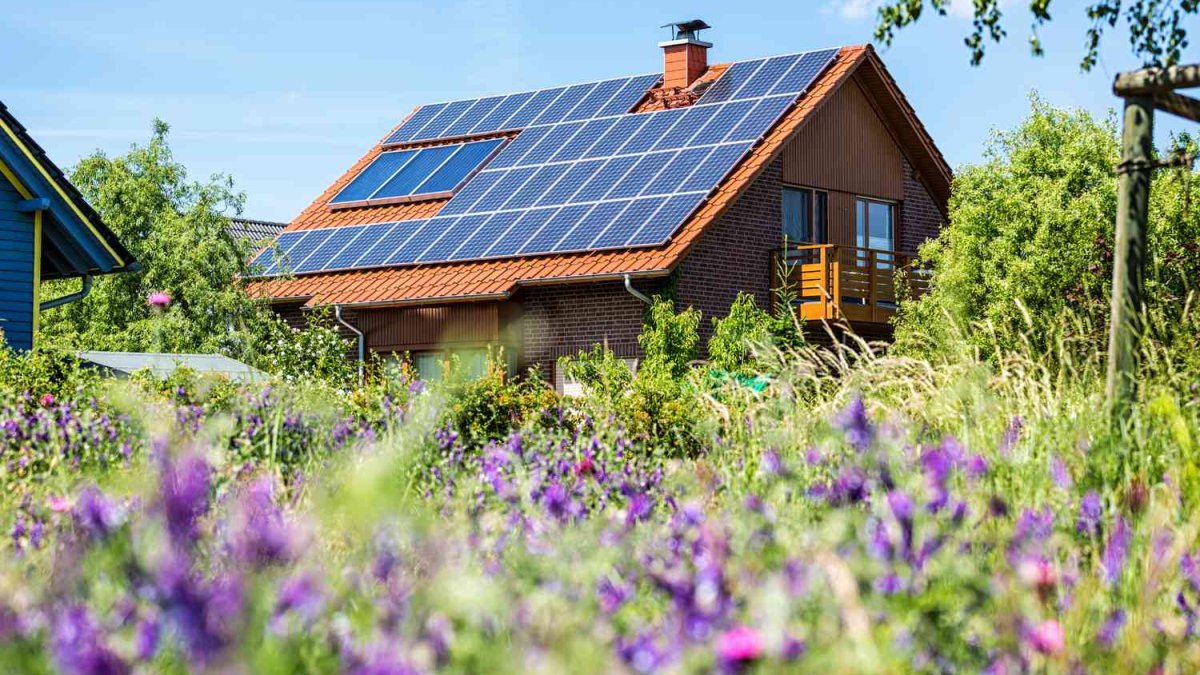
In 2024, the pursuit of sustainable living has become more vital than ever. Transforming your home into an eco-friendly sanctuary not only contributes positively to the environment but also enhances your personal space.
This guide offers six innovative and practical ways to make your home more sustainable this year. From energy-efficient upgrades to embracing renewable resources, these strategies are designed to help you reduce your environmental impact while enjoying a greener, more efficient home.
Smart Design Choices for Energy Efficiency
One of the key aspects of a sustainable home is energy efficiency, which can be significantly improved through thoughtful design and upgrades.
As experts from The Heritage Wardrobe Company say, “When it comes to furnishing your bedroom, choosing timeless, high-quality pieces is an investment in both style and sustainability.”
Utilise Natural Light and Climate-Responsive Design
- Strategic Window Placement: Depending on your climate, positioning windows to capture or limit sunlight can naturally regulate your home’s temperature. South-facing windows in cooler climates can use the sun’s warmth during winter while covering them during hotter months helps maintain coolness.
- Thermal Mass Materials: Incorporate materials with high thermal mass, such as brick or stone, in your home’s design. These materials absorb heat during the day and release it at night, helping to naturally regulate indoor temperatures.
- Green Roof or Living Wall: Install a green roof or living wall to provide natural insulation, reduce heat absorption, and improve air quality, while also enhancing the aesthetic appeal of your home.
Upgrade or Seal Windows and Doors
- Energy-Efficient Windows: Installing energy-efficient windows helps prevent heated or cooled air from escaping your home, thus conserving energy. Alternatively, resealing old windows and doors with weather stripping or caulk can also enhance your home’s thermal efficiency.
- Double or Triple Glazing: Consider upgrading to double or triple-glazed windows, which offer superior insulation by trapping air or inert gas between the glass panes, reducing heat loss and noise pollution.
- Thermal Curtains or Blinds: Use thermal curtains or blinds, which are designed to insulate windows and prevent heat loss in winter and heat gain in summer, further enhancing your home’s energy efficiency.
Embrace Renewable Energy and Sustainable Materials
Incorporating renewable energy and using sustainable materials are powerful steps towards a greener home.
Switch to Solar Energy
- Solar Panels: Installing solar panels is an effective way to harness renewable energy, reducing reliance on non-renewable resources and lowering energy costs in the long run.
- Solar Water Heaters: Install a solar water heating system to reduce reliance on conventional energy sources for heating water, thus saving energy and cutting costs.
- Solar Batteries: Incorporate solar batteries to store excess energy generated by your solar panels, ensuring a continuous power supply and reducing dependence on the grid, especially during peak times.
Opt for Recycled, Repurposed, or Reclaimed Materials
- Sustainable Construction Materials: Consider using repurposed or reclaimed materials like wood, beams, doors, and flooring for renovations. These materials are not only environmentally friendly but also add character to your home.
- Eco-Friendly Paints and Finishes: Choose paints and finishes that are eco-friendly, containing low or no volatile organic compounds (VOCs), to reduce air pollution and maintain a healthier indoor environment.
- Sustainable Fabrics and Textiles: When selecting fabrics for upholstery, curtains, or rugs, opt for sustainable options like organic cotton, hemp, or recycled materials, which have a lower environmental impact.
Water Conservation and Waste Reduction Strategies
Reducing water usage and managing waste efficiently are essential components of sustainable living.
Install Low-Flow Fixtures and Manage Water Wisely
- Water-Saving Fixtures: Incorporating low-flow faucets, showerheads, and toilets can significantly reduce water consumption and lower your water bills.
- Rainwater Harvesting Systems: Set up a rainwater harvesting system to collect and store rainwater for non-potable uses such as watering plants, flushing toilets, and washing clothes.
Drip Irrigation for Gardens: Implement a drip irrigation system in your garden, which delivers water directly to the roots of plants, minimising water waste and promoting efficient water usage.
Implement Smart Waste Management
- Recycling and Waste Reduction Systems: Establishing an effective recycling system and minimising waste production play crucial roles in reducing your household’s environmental footprint.
- Composting: Start a compost bin for organic waste, such as kitchen scraps and garden clippings. Composting turns waste into valuable soil conditioners, enriching your garden and reducing landfill waste.
- Eco-Friendly Packaging Choices: Opt for products with minimal or eco-friendly packaging to reduce waste. Support brands that use recyclable or biodegradable materials and avoid single-use plastics wherever possible.
In Summary
Embracing sustainability in your home is a meaningful step towards a healthier planet and a more efficient living space. By implementing these six strategies, you can significantly reduce your environmental footprint and contribute to a greener future.
Remember, every sustainable choice, big or small, makes a difference. Let 2024 be the year you transform your home into an eco-friendly haven, fostering a more sustainable lifestyle for years to come.
Jordan Avery
Related posts
Stay connected
Today's pick
- Things to Remember While Designing Your Custom Modular Kitchen in GurgaonGurgaon now known as Gurugram is the second largest city in the state of Haryana and is a reflectiossn of an ideal modern city with futuristic goals. Witnessing rapid urbanization, it has also emerged as a hub for contemporary homes, with homeowners seeking innovative and... The post Things to Remember While Designing Your Custom Modular […]

